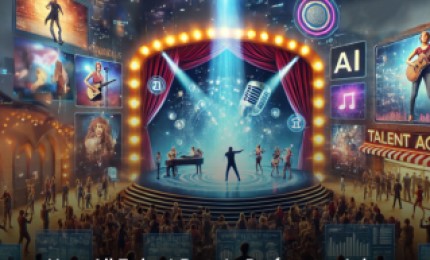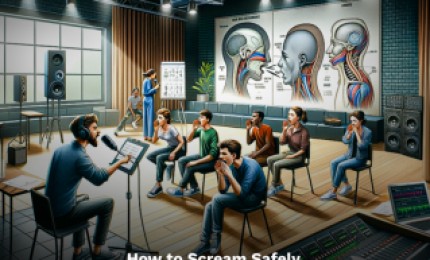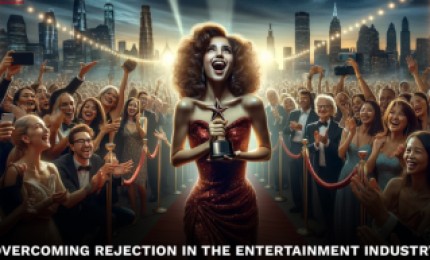As the film and television industries continue to grow rapidly in major U.S. cities like New York City, Atlanta, and Chicago, an increasing number of theater actors are exploring opportunities to branch into on-camera roles. This shift from stage to screen can appear daunting due to the distinct differences in how performances are delivered across these mediums. However, it's important to recognize that many core acting techniques are universal, whether for live theater or recorded media.
In theater, actors project to fill large spaces and connect with audiences who are physically present, which often necessitates larger, more exaggerated expressions and gestures. In contrast, film and television work tends to focus on subtlety and naturalism, capturing nuanced performances that are often viewed up close through the camera.
Despite these differences, the fundamental principles of good acting, such as understanding character motivation, emotional authenticity, and effective communication, remain the same. Transitioning theater actors must learn to adjust their performance styles to suit the intimacy of the camera while still employing the same deep analytical and interpretive skills that they use on stage.
This adaptation not only involves reducing physical expressiveness but also refining vocal projection and facial expressions to suit the microphone and camera's sensitivity. The camera picks up subtler gestures and quieter tones, which means that the over-the-top expressions sometimes used in theater can come off as unnatural on screen.
Understanding these nuances is crucial for theater actors who wish to make a successful transition to film and television, leveraging their strong foundational skills in a new, dynamic environment.
A fundamental distinction between theater and on-camera work is how they engage audiences. In film and television, directors meticulously manipulate the viewer's focus through careful camera edits and shot framing, directing attention to precise elements of the scene. This deliberate direction allows filmmakers to craft a viewer's journey through the narrative visually and emotionally. Conversely, theater offers a more open experience where the audience has the autonomy to direct their own focus across the broad tableau of the stage. This difference in viewer engagement profoundly affects how actors deliver their performances.
The essence of character portrayal remains consistent across mediums—actors aim to bring characters to life with authenticity and emotional truth. However, the nuances of performance are vastly different. Theater actors are trained to project both their voices and emotions to the back of the auditorium, ensuring that even audience members furthest from the stage can catch every word and gesture. In contrast, film and television work demands a more nuanced approach due to the camera's proximity. Subtle expressions and minor gestures are often sufficient to convey deep emotions on screen, as the camera can capture the slightest twitch or flicker of the eyes, which might go unnoticed in a live theater setting.
Transitioning from theater to film or TV requires a significant adjustment in an actor's approach to performance. Many theater-trained actors initially struggle with the scale of their performances, often described as "too big" for the camera. This common concern highlights the need for actors to recalibrate their acting style to suit the intimacy of the lens.
One practical tip for actors adjusting to on-camera work is to consider the "proximity of the audience." Unlike theater, where the audience is visible and their reactions perceptible, on-camera actors must often perform with the camera lens as their only audience. Understanding the framing of each shot is crucial to adjusting your performance appropriately. During auditions or on set, actors should feel empowered to ask the director or casting director about the shot's composition:
Close-ups: In close-up shots, the camera focuses tightly on the actor's face, capturing subtle expressions and minute details. This framing can magnify even the smallest twitch or change in expression, so actors need to moderate their performance to avoid appearing over-exaggerated. When performing in a close-up, think of the camera as a confidant sitting just a few feet away. Subtlety is key—allow your eyes and slight facial movements to convey your emotions, which can speak volumes more than broader gestures. This intimacy invites the viewer into the character's inner world, making it crucial to be genuine and restrained.
Two-shots: A two-shot includes two characters within the same frame, often used to capture interactions and dialogues between them. In this setup, actors can afford to be slightly more expressive than in close-ups, as the audience is looking at a wider visual context that includes body language and the interplay of relationships. However, the performance should still be more contained than on stage; think of it as having a conversation at a small table where subtle gestures and moderate voice projection are appropriate. It's important to maintain a balance where your actions are clear but not overly theatrical, ensuring the dynamics and chemistry between characters are believable and engaging.
Wide or Master Shots: These shots are typically used to establish a scene or show action within a larger setting, capturing a broad view that includes multiple characters and significant portions of the background. While wide shots allow for a broader performance, it’s essential to remember that the expression of emotions and movements still needs to be less exaggerated than in theater acting. Your performance should be natural and fluid to match the scale of the shot, which might involve interacting with props or navigating the set in a way that complements the story's atmosphere. Even though the camera captures more environment, each action should contribute to building the scene's mood and character dynamics without reverting to theatrical grandeur.
One of the significant challenges for theater actors transitioning to film and TV is creating a compelling reel that appeals to casting directors. A dynamic portfolio is crucial, as it should feature professionally filmed scenes rather than theater performances or classroom activities. Here’s how you can build a robust on-camera reel:
To effectively transition from theater to screen, actors must fine-tune their on-camera acting skills. This requires understanding the subtleties that define film acting:
Transitioning to film and TV requires dedication and adaptability:
By taking these informed and proactive steps, theater actors can not only successfully transition into the film and television industry but also thrive within it. Remember, every notable actor began with learning and adaptation, and persistence is your greatest asset on this journey. For more tailored advice, visit All Talent Experts and kickstart your on-camera career with expert guidance.

"Revolutionizing Performer Jobs Through Technology" In today’s digital age, the entertainment industry has transformed significantly, shifting from traditional in-person auditions...
Read Blog
So, you want to be an actor? Maybe you've dreamed about seeing your name in lights since you were a kid, or perhaps you've recently discovered a passion for performing. Whatever your reasons,...
Read Blog.jpg)
The film industry is undergoing a transformative shift with the integration of artificial intelligence (AI) in movie production, stirring both innovation and controversy. Recent films like Late Night...
Read Blog
Safeguarding Your Voice During Intense Acting Roles Acting roles demanding extensive screaming bring significant challenges to vocal health. While portraying high emotional stakes can be rewarding...
Read Blog
Memorizing lines for an audition frequently raises questions among actors. While the query might seem straightforward, the appropriate response is layered and complex. Understanding Audition...
Read Blog
Rejection is a fact of life in the entertainment industry. For every audition that leads to success, many more don't result in a callback. If you're aiming to carve out a career in this...
Read Blog